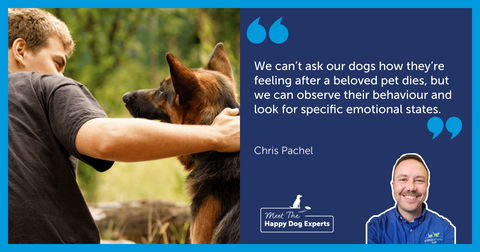
How To Tell Your Dog You Love Them – Dog Valentines
“And they called it puppy love” … but what if we told you that the love our dogs give us is anything but puppy love? With Valentine’s Day around the corner, it’s the perfect time to reflect on the boundless affection our canine companions shower us with day in and day out. While they may not bring you flowers or chocolates, their love is steadfast, unwavering, and available to us year-round.
We all know that our dogs adore us, but how can we convey our love to them in a way they understand? Discovering how to tell your dog you love them is a question every dog parent has pondered at some point.
In this blog we’re going to explore the heartwarming ways you can tell your dog you love them. From understanding their unique language of love to practical gestures that will make tails wag and eyes sparkle, we’ve got you covered.
Understanding The Language Of Love
Dogs and humans have unique ways of expressing love. To truly connect with your pooch, it’s essential to understand how they communicate and what actions will tell your dog you love them. Recent studies have shown that dogs can understand a remarkable number of words, responding to about 89 on average, with some even comprehending up to 215 words.
Remember, your dog is a master at reading your emotions. The tone of your voice, your body language, your overall demeanour all play a significant role in how your dog perceives your affection.

The Art Of Communication
Being a good listener is the first step in showing your dog you love them. Watch your dog’s body language closely; there’s much more to a wagging tail than meets the eye. It’s their way of communicating their feelings, and understanding it is vital for strengthening your bond.
Physical contact is also a key element of showing your dog you love them. Your dog might lean on you as a sign of trust, and reciprocating this action by leaning into them can strengthen your bond.
Scheduling quality time together is important. Playtime, walks, training sessions, grooming, and simply resting and relaxing together creates positive experiences that tell your dog you love them. If you have a nervous pup, why not try implementing our ADAPTIL Chew treats into their routine, bursting with calming ingredients, these tasty chews will help your pup to relax.
Activities To Express Love
Valentine’s Day presents the perfect opportunity to engage in activities that tell your dog you love them:
- Play Your Pup’s Favourite Game: Whether it’s fetch, tug-of-war, or hide and seek, choose your dog’s preferred game and have a blast together!
- Visit Their Favourite Places: Take your dog to their favourite park for a leisurely walk, and if possible, invite their best canine pals to join in the fun.
- Training Sessions: Training isn’t just for learning cues; it’s a fantastic way to build your bond, boost your dog’s confidence, and provide mental stimulation. If you have a nervous pup, make sure you have a Calming Collar, the comforting pheromones can support during the training to help them focus on what they are learning.
- Reward For Good Behaviour: Opportunities to reward your dog present themselves throughout the day. For instance, when they’re resting calmly while you work, offer praise, play with a toy or a treat. These positive interactions reinforce your bond and show your dog you love them.

What To Avoid
While showing affection is crucial, there are certain actions your dog might not understand or even misinterpret. It’s essential to avoid these:
- Hugging Your Dog: As humans, we often enjoy hugs, but for dogs, they don’t necessarily interpret it as a positive gesture. In fact, hugging can make them feel uncomfortable and prompt them to want to escape. Pay close attention to your dog’s body language to see if they truly enjoy this interaction. It’s often better to choose other forms of contact to show your dog you love them.
-
Sharing Food: Although humans often share food as an expression of love, your dog doesn’t need to partake in your meals to feel loved. Treats have their place and can be useful for training, but sharing your meal isn’t.
Positive Signs From Your Dog
Your dog will undoubtedly reciprocate the love you show them. Positive signs of love from your dog include:
- Choosing To Spend Time In Your Company: Your dog will seek your presence and want to be close to you.
- Playfulness: They’ll show their desire to play and engage with you.
- Leaning Into You: Leaning against you is a sign of trust and affection.
- Relaxation: Your dog will relax and feel comfortable in your presence.
- Eye Contact: Your dog will gaze into your eyes, reinforcing your connection.
- Enthusiastic Greetings: When you return home, your dog will give you a warm, enthusiastic welcome, as if they’re saying “I missed you!”.
As Valentine’s Day approaches, remember that it’s not just about celebrating human love; it’s an opportunity to show your dog you love them. Make this Valentine’s Day truly special for your dog by understanding their unique language of love and engaging in activities that bring joy to both of you.

Are you looking for further ways to show your dog you love them? Get in touch! We’re always happy to help in any way we can. You can also stay informed with our latest tips and guides, as well as find information about all our ADAPTIL products, such as our ADAPTIL Chew or ThunderShirt by ADAPTIL, by signing up to our newsletter.
Understand Dog Body Language better with free course from Dog Training experts:









































